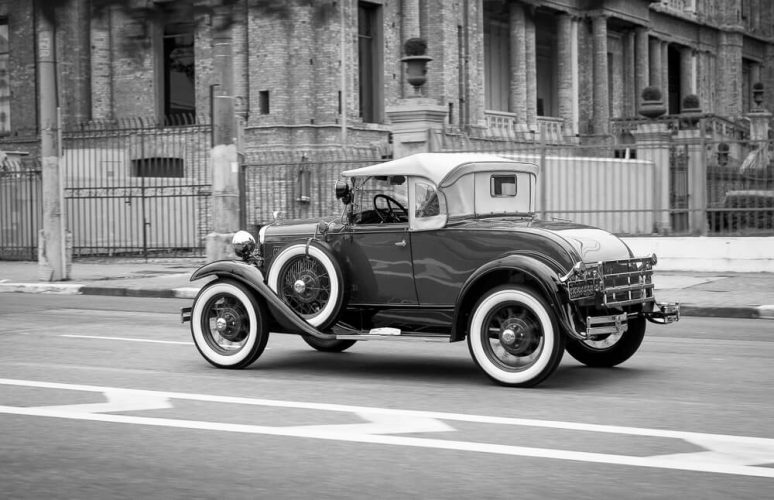
In modern times, getting car coverage is a standard part of owning a car, but it wasn’t always this way. When you peek into car insurance history, you’ll find a time when auto coverage didn’t even exist. We’ve come a long way since the days when you could roll up and buy a Model T without a license and then drive around without protection. Let’s take a drive through the history of auto insurance to learn how—and why—car insurance has evolved over time.
Horse-Drawn Wagons to Horsepower: The Inception
Getting insured is such a massive part of modern life, with policies covering everything from your home to your health. However, insurance as we know is actually a somewhat recent innovation. In the Middle Ages, skilled workers would have some financial support through their guild to help pay for any accidents or issues—much like the general or professional liability plans of today.
When it came to transportation, plans for horse-drawn buggies weren’t a big concern. If two carriages collided, there simply wasn’t a huge risk of damage due to their low speed. And if there was, people sorted it out. Everything changed, however, with the dawn of the automobile.
Laying Down the Law: The First Car Insurance Policies
Motorized automobiles started cropping up in the late 1800s. Soon after, companies started offering auto coverage to help protect drivers. People quickly realized that high-speed cars had a much greater potential to cause damage than horses, wagons, and carriages. At this time, drivers were still learning about highway etiquette and safety features, making driving even more risky.
So, when was car insurance invented and by who? In 1898, Travelers Insurance Company sold the first ever auto policy, kickstarting the evolution of car insurance.
Key Milestones in Car Insurance History
Once auto policies officially came into existence, they progressively became more widespread. In fact, state governments began to recognize the importance of having people pay for the damage they caused to themselves and others, rather than the government picking up the tab. Eventually, best practices for auto coverage became standardized until most states established laws requiring a minimum level of protection.
A Timeline of Innovation and Regulation
You may now be wondering, “When did car insurance become mandatory?” Although companies started selling vehicle coverage in the late 1800s, it took several more years for state-mandated policies to become the norm. Here’s a breakdown of key dates to know:
- 1925: Massachusetts and Connecticut passed the first laws related to auto coverage. In Massachusetts, all drivers needed a policy, while Connecticut laws only required drivers to sign up after getting into a crash.
- 1956: New York began requiring all drivers to insure their vehicles.
- 1957: North Carolina passed a mandatory coverage law, and dozens of other states began legislating auto plans throughout the ’60s and ’70s.
Policy minimums vary by state, and there are still a few states that don’t require drivers to insure their cars. However, even those states require some proof of financial ability to cover damages.
Scandals and Scams: Lessons Learned Over Time
Throughout car insurance history, there have been scandals and scams that really shook things up. In the early 20th century, some companies were caught inflating premiums and denying valid claims, which understandably frustrated consumers. The 1980s brought the issue of “redlining,” where insurers denied coverage based on location, prompting reforms for fair access. More recently, staged accidents and fraudulent claims have led to better fraud detection tech.

How Car Insurance Has Changed with the Times
Auto policies continued to evolve as more states codified coverage requirements into law. In the beginning, people would piece together their plans by buying various policies that addressed different risks. From the 1930s to the 1950s, insurers started offering different types of standardized plans, like comprehensive and uninsured motorist protection.
Minimum coverage also increased as cars became more expensive to repair. During the ’60s, ’70s, and ’80s, these rates also became more regulated and standardized.
Adapting to Technological Advancements
Technology has made cars safer to protect against expensive accidents. For example, when you consider the history of seatbelts, it’s fascinating to see how long it took for them to become standard in vehicles. But now, modern cars are decked out with not only seatbelts and airbags but plenty of other high-tech features.
Technology has also revolutionized the way insurance works. Telematics programs, which track mileage and driving patterns, have made it possible for insurers to individually adjust rates, optimizing risks. Carriers have also used the internet to support digital account management tools, simplifying the process of getting and staying insured.
Changing Gears: From Voluntary to Compulsory Coverage
So, why did most states decide to make insurance mandatory? These minimum coverage laws emerged as cars became more popular within society. With more people driving, more accidents occurred, and people often had trouble getting compensated for their costs. In response, governments determined a basic level of compulsory protection to reduce the financial impact of automobile accidents.
Present Landscape of Auto Insurance
All of these developments have led to the current coverage landscape. Standard policies might vary depending on your carrier and your state, but there’s now a well-established system for determining fault, calculating premiums, and managing claim payouts.
Balancing Act: Premiums, Policies, and Protections
When getting insured, it’s important to balance your budget with the level of protection you need. Some people may be fine with just a minimum coverage liability policy that only pays for the other driver’s expenses. For example, if you have an older used car that isn’t worth much and are comfortable relying on your healthcare plan for any medical costs, liability may be enough for you. For an extra boost, you could pair the policy with uninsured motorist assistance.
However, if you have a brand-new car you’re still paying off, you’ll want to ensure you fully recoup any accident-related expenses, even if you were at fault. In that case, you’d want to opt for a full coverage policy to maximize your protection.
Navigating New Roads: Self-Driving Cars and Telematics
Although telematics programs were a major innovation for insurers, technology is still progressing. Insurers and lawmakers are currently working to learn how self-driving cars will affect insurance and figure out how to cover them. As drivers bear less personal responsibility for accidents due to self-driving features, you can expect new policies to emerge.
The Newest Innovation in Car Insurance Since 1897? Online Quotes
The auto insurance industry is constantly adapting to compensate for new risks and meet the needs of covered drivers. Although there were some initial growing pains as people figured out the risks associated with driving and owning an automobile, state law quickly adapted. Then, as technology developed, insurers started leveraging new tools to help drivers save money and decrease their risk level. As innovations like self-driving cars enter the scene, you can expect the industry to continue evolving.
For now, you can take care of all your coverage needs when you go online and request an instant quote from Freeway. By just entering some basic information, you can get the lowest rates available and view discounts to maximize your savings. You are also welcome to give us a call at (800) 777-5620 or stop by one of our convenient locations.



